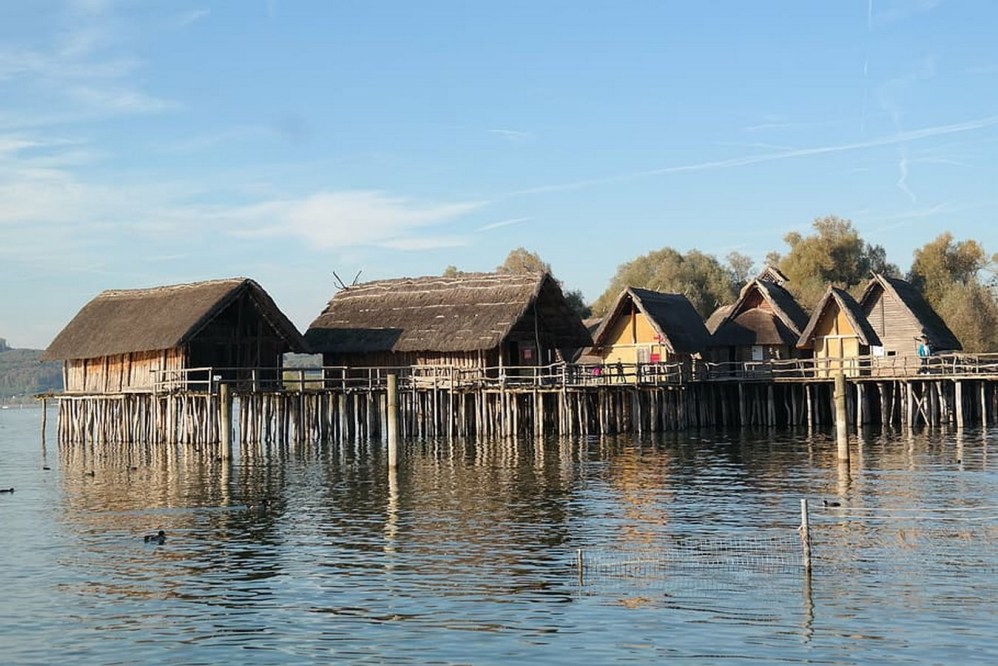Vernacular Architecture, a term given to the local architecture of any particular area, constructed using the traditional materials that are present in abundance. This typology of architecture, widely practised once, has now been noticed to be fading away and replaced by modern solutions which will eventually harm the environment. On one side, the world is striving to head to a sustainable future, whereas on the other side we notice that some of the most efficient vernacular construction techniques that are made to avoid harm to our nature are being washed away.
Listed below are 10 Vernacular Alternatives to Unsustainable Architecture or Construction Techniques:
1. Adobe Roof
Adobe roofs are constructed using a mixture of soil/clay, water, sand, and other organic materials that contribute widely to its stability. This mixture is then pressed into wood forms to form rows of dried earth bricks. To assemble an Adobe Roof, metal or wooden beams are used for creating a framework, also known as Rafters and Purlins, over which the dried bricks are laid. These Adobe Roofs are fire-proof and provide thermal insulation to the rooms within.



2. Timber – Framed Construction
Timber Framed Construction works on principles similar to the wattle and daub procedure. In this construction technique, the vertical wooden posts have a large base and forked ends, narrow beams are then placed on these ends and fastened using raffia (bark twine). To add on, bamboo members are added in the form of a grid to incorporate infill wall treatment.



3. Pile Dwellings
Found mostly in wetland and swamp communities, this vernacular architectural construction technique is well known in Nzulezo, Ghana. The process begins with digging into the lakebed and further inserting thick barks up to 5 feet to add to the foundational strength of the structure. Above this, a post-and-beam structure is adapted for securing at regular intervals and making spaces for doors, windows, and porches. These structures are capped with a double ventilated roof that channels the air to help in humid times.


4. Compressed Earth Block
Being used from the 1950s, Compressed Earth Blocks have been developed over time for low-cost construction. Also known as the ‘Dutch Brick’, this block uses all-natural materials for its construction and causes no harm to the environment. In this construction technique, on-site materials are used which further reduces the shipping cost making the expenses negligible. It has various properties that benefit the health and life of the building in various ways, the blocks made using this technique are fire-resistant, mold-resistant, insect resistant, and sound resistant.



5. Laterite Construction
Laterite in a moist state can be cut into regular rectangular blocks, which are further used in the construction process. The mining steps are done right when the material is wet and soft. On being exposed to air, laterite hardens and develops strength locking into a rigid lattice structure. These laterite blocks become hard enough to withstand harsh environmental conditions.



6. Rat Trap Bonds
This brick bond is considered to be the pioneer of providing thermal insulation and creating a microclimate within the building. Made using locally available bricks and the local masonry methodologies, the rat trap bond is well-practised and highly efficient. In this method, the bricks are placed in the brick-on-edge position unlike the and 2 walls of the same type are built giving a ‘trap’ in between them. This space acts as a vacuum where the thermal energy or the heat gets trapped and does not transfer to the inside of the building.


7. Bamboo Construction
Bamboo is one of the most easily available and fast-growing materials with the qualities to withstand the structural load of construction. Bamboo is brought into use by making friction-tight rope connections with the help of ropes, most abundantly found are the green bamboo strips, these fibres are watered, dried, and then used. Another method to use Bamboo is by Positive Fitting Connections, wherein interlocking methods are used. The properties that Bamboo possess such as being round, hollow, and easy to split make it optimum for interlocking joinery.


8. Reed Houses
Predominantly found in use by the Marsh Arabs or the Ma’dan People, reeds have been used to curate construction elements such as columns, arches, and walls. Combining this, on average a basic reed house can be prepared in just 3 days. Once constructed, they are easy to carry around and can be reconstructed as per need in just one day. This has also been used in the construction of labour camps as well as refugee housing.


9. Ab-Anbar
This construction is mostly found in Iran. Ab-Anbar translates to ‘water storage’ in Persian. It has been constructed with the purpose of a water channel approximately 10-15 meters below the ground. These water channels were made using brick masonry. Locally available brick has been preferred due to feasibility reasons. The Ab-Anbar also has openings or cut-outs at its head which work as the windcatcher known as Badgir in Persian. These windcatchers channel the air down to the cistern to cool it down and avoid condensation or rise of bacteria.


Ab-Anbar, Iran Source: ©www.flick.com
10. Cob Construction
Cob is a material made using majorly subsoil, fibrous organic material, and lime. Typically used to construct walls, these also possess the ability to withstand load and can be constructed in a short time. Cob is fire-proof and enriched with fibre that gives it the strength to withstand the tensile load. Cob walls provide thermal insulation to increase comfort inside the building. Cob as a material has a long life span considering the harsh environments as well.



















